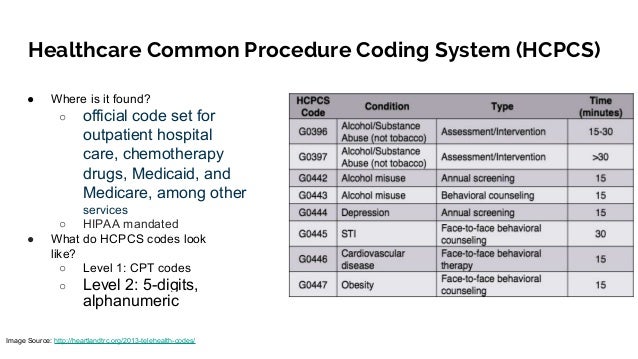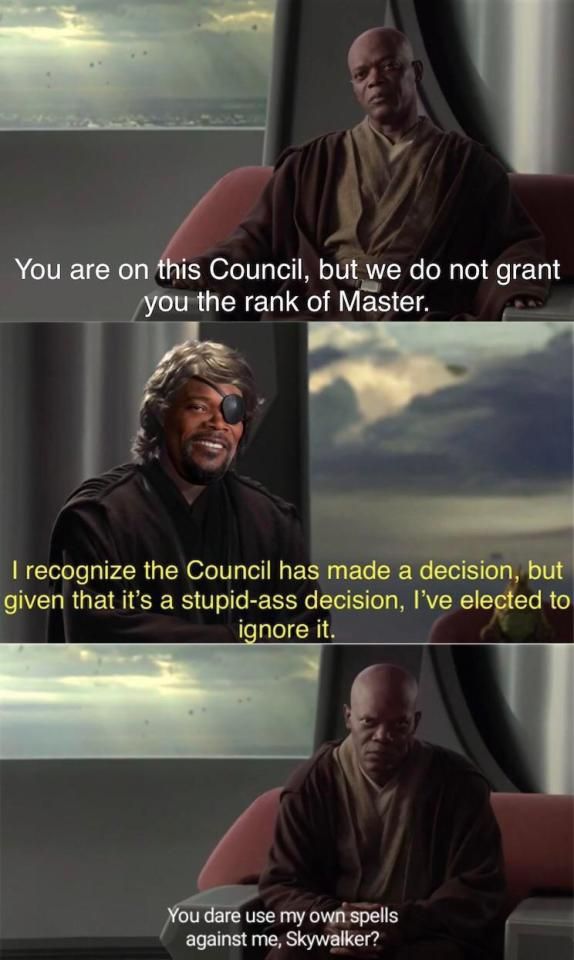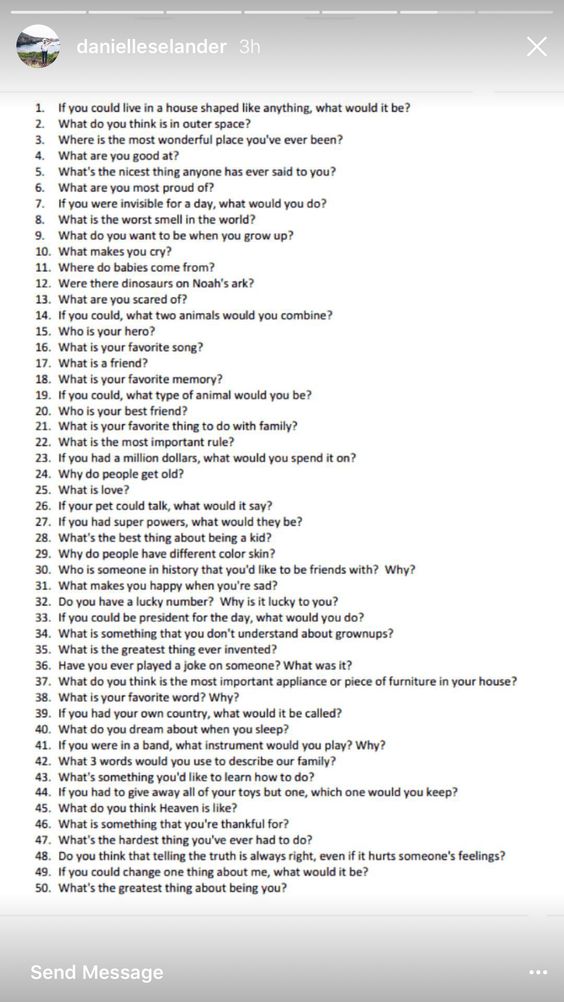Healing from abandonment
Advice for Healing from Abandonment Issues
I had a picture-perfect childhood: fit with loving parents, a nice house, a big yard, and plenty of toys. My only concerns at the time were going to school and playing with my Barbies; running off to soccer practice and riding my scooter; bugging my brother and watching Dragon Tales. Unfortunately, it never dawned on me that this less-than-eventful lifestyle was a privileged one—or that this normalcy might one day get interrupted, and I should appreciate it while I had the chance. Fast forward to my sophomore year of college. It’s a Saturday night, and I’m getting ready to go out with some friends. I’m quite literally walking out the door when my brother calls me, concern and confusion in his voice. I ask him what’s wrong; he talks; I cry; we step out of the cookie-cutter mold.
Mom left, he told me. She stayed in a hotel for a few nights while she “thought things over.” But in the end, she left. She told us time and time again that she wasn’t leaving us, she was leaving our father. But it was all the same. She couldn’t be found in the kitchen on Wednesday nights making spaghetti or on Sunday mornings making pancakes. She wasn’t around to wake me up with a smile or wish me a great day, every day. She simply didn’t exist the way she had before.
I felt completely abandoned. This woman—my mother—who I idolized, loved, and cherished for 20 years suddenly disappeared. And I was left to deal with whatever mess she left behind. It took me a few years to acknowledge the magnitude of this mess, but today I understand it will take time and hard work to clean it all up. To heal from the pain and the abandonment issues she left me with. It certainly isn’t easy, but it’s worth it. And I’m thankful I have the opportunity to grow from this experience as I continue on my journey. The following tips have steered me in the right direction and light the road to healing:
1) Own the story.
“First, recognize and name what happened to you: ‘I got left. I was orphaned. I was betrayed.’ This helps you own the situation and get some power back from doing so,” says Jessica Tappana, Licensed Clinical Social Worker. “Make sure when you do this that you try to identify how you are feeling about what happened. ‘I got left and this sucks. My beloved died, and I feel bereft.’ Stop rolling the presses if you go too far and start drawing conclusions about what this event means for you, especially if you are drawing negative conclusions. If you find yourself saying, ‘I got left, this sucks, I must be an awful person,’ or, ‘I never deserve to meet anyone great,’ put some limits around these statements. This is the kind of thinking that puts you in a downward spiral and makes your abandonment feelings more intense.”
I was betrayed.’ This helps you own the situation and get some power back from doing so,” says Jessica Tappana, Licensed Clinical Social Worker. “Make sure when you do this that you try to identify how you are feeling about what happened. ‘I got left and this sucks. My beloved died, and I feel bereft.’ Stop rolling the presses if you go too far and start drawing conclusions about what this event means for you, especially if you are drawing negative conclusions. If you find yourself saying, ‘I got left, this sucks, I must be an awful person,’ or, ‘I never deserve to meet anyone great,’ put some limits around these statements. This is the kind of thinking that puts you in a downward spiral and makes your abandonment feelings more intense.”
2) Identify and feel your feelings.
Heidi McBain, Licensed Marriage and Family Therapist, says it’s important for an individual with abandonment issues to then “acknowledge that they are hurting and in pain, and that this situation is going to be hard, but they are strong and will get through it. ” In addition, they should “give themselves plenty of time to grieve the loss of the life they had planned with the person who left and remind themselves that they are going through a big transition in their life—that things will get easier, but they have to take things slowly, step-by-step, day-by-day.”
” In addition, they should “give themselves plenty of time to grieve the loss of the life they had planned with the person who left and remind themselves that they are going through a big transition in their life—that things will get easier, but they have to take things slowly, step-by-step, day-by-day.”
3) Find a healthy outlet for expression.
It will also help to channel those feelings into something positive. Caleb Backe, Health and Wellness Expert, explains: “One of the most important aspects of overcoming your fear of abandonment is to find a healthy outlet that can help you face your emotions and fears in a way that is safe and secure. Sometimes this can be talking to a close friend or family member; other times it can be as easy as making art or keeping a journal.”
4) Recognize that you are not the problem.
Another critical stop on your journey toward healing from abandonment is acknowledging and understanding that you are not the problem. “When a person is abandoned, they tend to view themselves as unlovable,” says Tappana.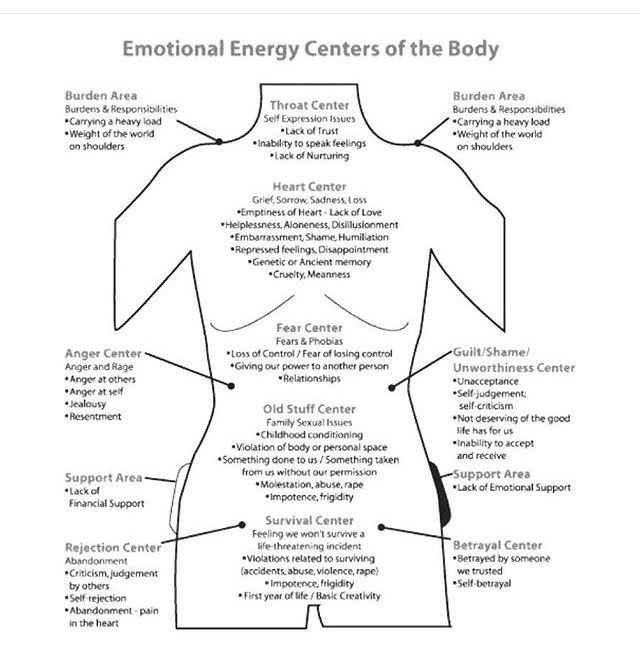 “When we find ways to view ourselves as a whole person and understand at the deepest levels that it had nothing to do with us, but rather more to do with the inabilities of the person who left, then we can become free.”
“When we find ways to view ourselves as a whole person and understand at the deepest levels that it had nothing to do with us, but rather more to do with the inabilities of the person who left, then we can become free.”
5) Be willing to ask for help.
And lastly, don’t be afraid to ask for help, perhaps from a professional. “If the abandonment you went through in the past is keeping you from moving forward, know that you may need a little extra support,” advises Tappana. “Consider talking to someone trained in helping people overcome struggles such as a pastor or professional counselor. A professional can help you take a deeper look at your wounds in a safe environment. You don’t have to live with the weight of your sudden loss or in constant fear that anyone you love might leave. Through counseling, you can find your self-confidence and learn to slowly rebuild your trust in the world around you.”
10 Steps for Abandonment Healing — Integrative Psychotherapy Mental Health Blog
Anxiety, Trauma and Abandonment healing in Cedarhurst in the Five Towns of Long Island, NY.
Want to relieve some symptoms related to abandonment + emotional neglect and replace those spaces with warmth, a sense of “connectedness” and feeling of stability?
If you’ve resonated with the any of the symptoms described in my previous blog, you can experience relief starting right now. Read the below tips to help with your healing right now.
1) Take Responsibility.
Make your healing your responsibility. Yes others may have hurt you, but this is your life, and the more important you make your healing, the farther you’ll get and the better life will be. Taking accountability is the opposite of self-abandonment, it is the way to self-embodiment and self-care.
2)Structure.
Structure breeds Stability. Manage your time and you’ll be managing your daily stressors. Sculpt activities into your daily life routine; supportive others, friends, family, support groups, therapy, art class, or a hobby that’s rejuvenating.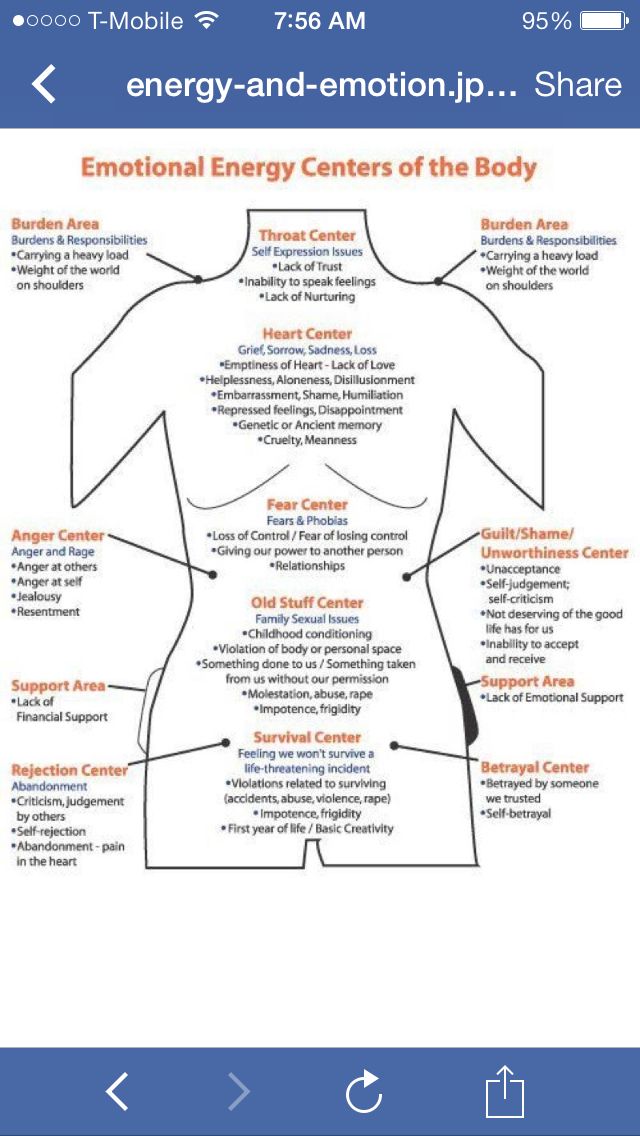 Set limits around you work-life balance so you ensure that your personal time is replenishing.
Set limits around you work-life balance so you ensure that your personal time is replenishing.
3) Self Validate.
As you become aware of how your issues are related to your past experiences, validate, validate, validate. Why is self validation primal to your healing? If you don’t self validate, you’ll be dragging your “seeking validation self” to anyone who will listen to you, unconsciously seeking their approval and validation. If you throughly self validate on a daily basis, you can ask others for support, but it isn’t from the same desperation for them to grasp the intensity of your emotional experience. You feel stronger, and friends can be there for you in the way friends are meant to.
4) Connect with the present moment + Stay There.
The best way to building a better present + future? Staying in the moment. Pains, trauma, disappointment and emotional scars all steal the experience of simply being in the experience of life. You can find safety by slowing down and getting connected to the simplicity of the present moment. Notice thoughts or feelings, watch them pass like clouds, and then bring your focus back to there here and now and whatever you are doing, or how you’re being.
Notice thoughts or feelings, watch them pass like clouds, and then bring your focus back to there here and now and whatever you are doing, or how you’re being.
5) Transform Pain to Possibility.
Some of the most powerful, impactful people I know have used their pain to create, to change, to offer something new for themselves and then for others. Put your suffering to energize something constructive. Take the passion and energy to commit to living a healthy life + learning and practicing and modeling healthier connections with others.
6) Feelings VS Facts
Know the difference between a feeling and a fact. Emotions can come over you and overwhelm, but remember, feelings are temporary. Check the facts when you notice emotional overwhelm, and bring yourself back to your core.
7) Dare Despair + Dig In
Feelings such as despair, helplessness or hopeless may come up. Check in and see if its a fear from a younger part of self or the part of self that experienced the loss, and orient to reality. Look despair in the face and see what’s beneath it. Do you need some space to grieve, to talk or to get some extra support? Do you need a reminder that you are no longer as vulnerable as you were when you were younger? Dive in and see what’s beneath, but don’t get wiped off the shore with the despair wave.
Look despair in the face and see what’s beneath it. Do you need some space to grieve, to talk or to get some extra support? Do you need a reminder that you are no longer as vulnerable as you were when you were younger? Dive in and see what’s beneath, but don’t get wiped off the shore with the despair wave.
8) Stretch Your Emotional RubberBand.
Emotional neglect is primarily about emotions being shut down, and experiences being ignored, dynamics being minimized and processes being rushed. Notice your daily feelings, reactions, urges and words you choose to use. Challenge some of your limits and see if you can slow down + stretch what you’re used to. Challenge your limits. Say that kind compliment, stay in the uncomfortable moment, allow the other to finish their piece, even if you’re not used to it. Ask for what you truly need, even though its a sliver more vulnerable than you’re used to. Ask that person out even if they might reject you. The more you stretch that band, the more “bandwidth” your life can experience. These are the steps to nurturing emotional experience and building emotional intelligence.
These are the steps to nurturing emotional experience and building emotional intelligence.
9)Heal the Old Wounds + Dive into the Triggers
Triggers of today are actually clues to letting you know where the hurt is. Your child needs more time with you and you’re feeling trapped? Your partner wants to share more with you and you’re stepping back? You’re ready for a big project at work but you’re starting to stress out? Peel away the defense and look at what the clue is about. Your wounding is most often in that exact place. Get curious, and with a trauma informed therapist, you can do the work to identify + offer healing to those exact spaces. Once you process the past hurt, loss, abandonment or pains, you can show up fully. Healing the exact trigger areas is what allows for more meaning, more joy, more love and more authentic connections.
10)Rebirth Your Self
In order to change and heal fully, you’ll need to make some changes. You can no longer stick to what you’ve been doing as it’s clearly not working. You’ll challenge some thoughts, strengthen your self esteem and slowly transform your sense of identity. You have the power to heal and to re-own who you are and what your path is on this life.
You can no longer stick to what you’ve been doing as it’s clearly not working. You’ll challenge some thoughts, strengthen your self esteem and slowly transform your sense of identity. You have the power to heal and to re-own who you are and what your path is on this life.
You’re the biggest component in the positive growth you’ll experience. Choose to rebirth as you heal the past wounds. As you move through the healing, choose to let go of the weights of anger, and the trappings of grief. You may see a more beautiful, deep life than ever before imagined possible.
As humans, when we break, we shatter. When we shatter we get to choose to sit in the brokenness or break through the blockages and climb out of the the murky waters.
Broken is beautiful when you allow it to birth something richer, something different, something powerful.
And then suddenly, broken isn’t broken anymore, it’s simply something
different.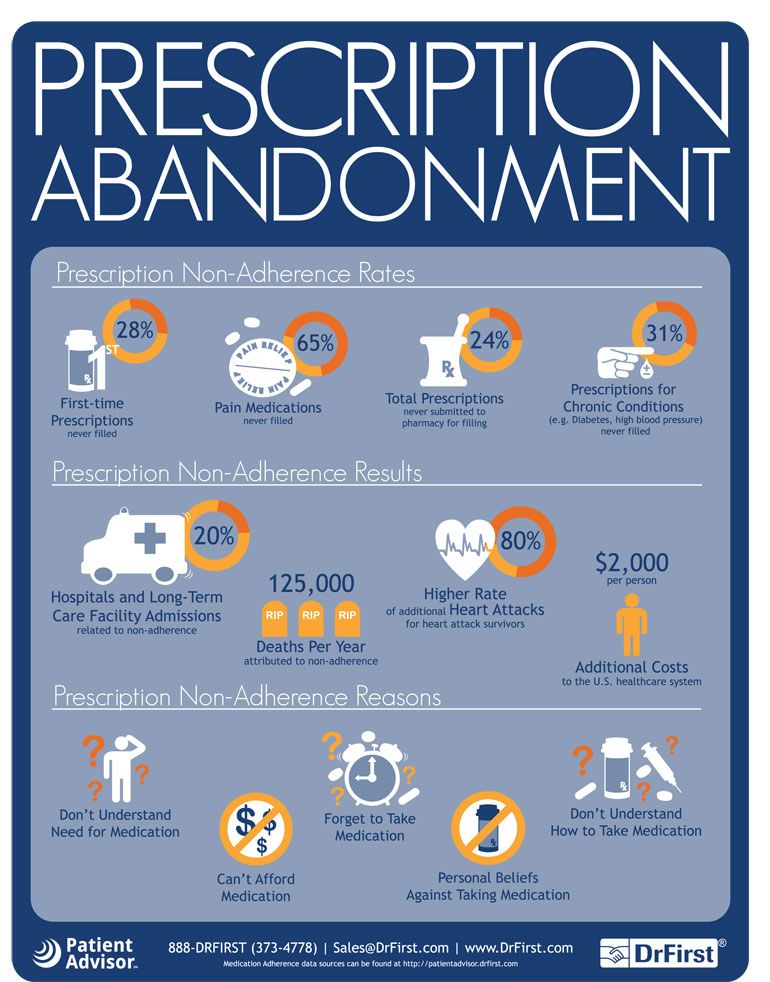
And suddenly you’re on a new platform of life, seeing, being, doing things you never imagined you’d do.
Seeking to deepen your healing and recovery from emotional wounds? If you live anywhere in Long Island, New York, in Nassau or near my office in Cedarhurst, reach out here. We are here for you and ready to help!
Schedule your free 15 minute consultation and to begin setting up a treatment plan to helping you heal!
At Integrative Psychotherapy we help you engage in mind-body focused healing so you can live more wholesomely and love more deeply.
We use scientific based methods such as EMDR, Eye Movement Desensitization and Reprocessing, Sensorimotor Psychotherapy, Internal Family Systems/ Parts work, Expressive Arts and More. Click below for your free 15 minute consultation.
Abandonment Trauma, Boundaries, Depression, Love and RelationshipsEsther Goldsteintrauma therapy 11516, anxiety of parenting, abandonment anxiety five towns, healing wounds, hewlett therapist, woodmere anxiety counseling, cedarhurst therapist anxiety counseling7 Comments
0 LikesRead online “Healing from trauma.
 The author's program that will restore the health of your body, Peter A. Levin - LitRes
The author's program that will restore the health of your body, Peter A. Levin - LitRes Translator's Foreword
Peter A. Levin's book is one of many in a series of wellness books. And at the same time, there is something in it that not only makes it stand out from the general background (after all, each book, as they say, “has its own face”), but also makes you want to say a few words to set readers up to meet her and to successfully work on the 12-Step Trauma Healing Program. nine0005
To begin with, this book, written in America by the author- American , neither stylistically nor in terms of content evokes the slightest association with the stereotyped "American standard" of popular and popular science literature on medical topics. Unlike many other books that will share a shelf with her in stores and libraries, it is not replete with sentimental stories of miraculous recoveries and touching memories of the author of how patients, with tears of tenderness, threw themselves on his chest, exclaiming: “Oh, doctor, I I know that our meeting is destined in Heaven!” And although the subject to which it is dedicated is the author's methodology created by Peter A. Levin, the main characters of this book are us, the readers, and more precisely, users of . Of course, you already realized that you are holding a practical guide in your hands. And if you take it as a guide to action, the time and money that you sacrifice to study it will certainly not be wasted.
Levin, the main characters of this book are us, the readers, and more precisely, users of . Of course, you already realized that you are holding a practical guide in your hands. And if you take it as a guide to action, the time and money that you sacrifice to study it will certainly not be wasted.
Peter A. Levin offers us a coherent, logical, coherent and clear system of healing from trauma. A system that is not burdened with any of the confusing technical excesses and advice that many of us could cause internal protest and rejection. You don’t have to rate anything “on a scale from 0 to 10” – anyone who has read at least a few American health books is probably familiar with this kind of overseas know-how. (What Americans don't rate on this scale is the level of physical pain, and the degree of trust in their medical consultant, and the desire to smoke a cigarette or eat an extra donut!) Also, you will not find here a single piece of advice from the series “Don't eat meat - eat soy! "," Do not drink milk - drink water! etc. You will not be confused by the terms that migrated to popular science literature from classical psychoanalysis, and even more outlandish ones from alternative medicine. You will not need to look for biologically active points on yourself and memorize the sequence in which you need to press on them, tap on them, massage them, and so on and so forth. nine0005
You will not be confused by the terms that migrated to popular science literature from classical psychoanalysis, and even more outlandish ones from alternative medicine. You will not need to look for biologically active points on yourself and memorize the sequence in which you need to press on them, tap on them, massage them, and so on and so forth. nine0005
But more importantly, you will not act blindly. Because the author precedes the description of the methodology with a brief theoretical justification, presented so simply that even a child can understand it. This could only be done by someone who perfectly knows the subject he is writing about. The way it is. And we should remember that Peter A. Levin is an accomplished physician and physiologist with a classical medical background and a Ph.D., which in the American hierarchy of scientific titles corresponds to the Russian Ph.D. nine0005
The thoroughness and responsibility of a knowledgeable specialist can also be seen in the fact that the author does not promise us results “in five minutes”.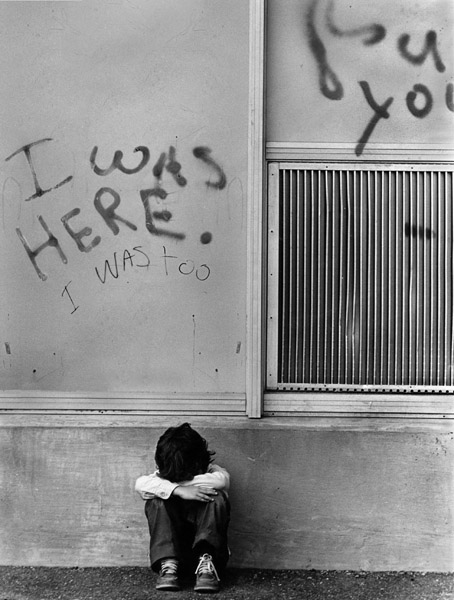 And even the story told at the very beginning of the book about how a certain Nancy got rid of most of her problems in one session is needed rather for us to understand that lightning release from an old trauma is not only fraught with a strong shock for the patient, but can also plunge to the shock of his doctor. So if you really want to benefit from this book, you'll have to follow one of Peter A. Levine's top tips and move forward in small, careful steps. nine0005
And even the story told at the very beginning of the book about how a certain Nancy got rid of most of her problems in one session is needed rather for us to understand that lightning release from an old trauma is not only fraught with a strong shock for the patient, but can also plunge to the shock of his doctor. So if you really want to benefit from this book, you'll have to follow one of Peter A. Levine's top tips and move forward in small, careful steps. nine0005
However, there is another, perhaps even more important point that cannot be ignored. While working on this book, I had a firm conviction that, in introducing it to Russian readers, it is necessary to say something about the "difficulties of translation." The main problem emerges already when translating the original title - "Healing trauma". It lies in the fact that the semantic fields (this term in linguistics denotes the entire set of meanings inherent in the word) of the English word "trauma" and the Russian word "trauma" do not coincide exactly at the point where the main meaning lies.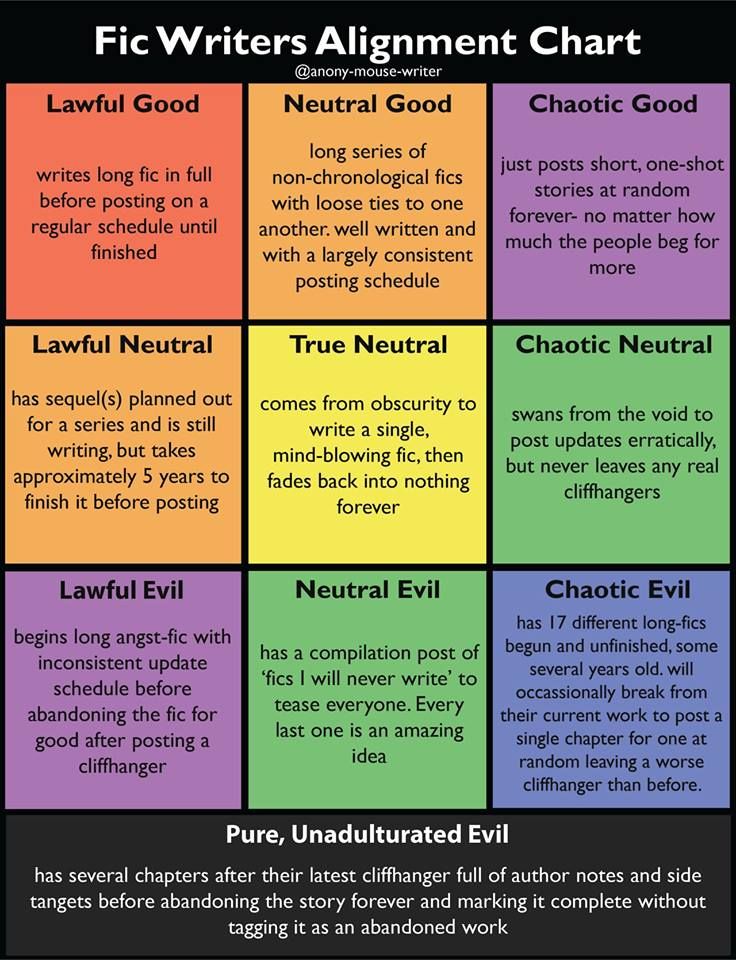 A person whose native language is Russian, first of all, means physical damage to the body by injury: a bruise, dislocation, cut, fracture, etc. However, in English, for a generalized designation of these sad phenomena that force us to turn to traumatologists, the word “injury” is most often used, which Russian-English dictionaries translate as “harm, damage, injury, injustice, resentment”. And the same dictionaries are trying to convince us that "trauma" - it is "injury" - is only in a medical context. Alas, it is not. For a modern speaker of living English, any event that painfully touches him to the quick can become a “trauma”: a scandal in the family, humiliation at school, divorce of parents, a fight in a bar, hassle at work, dismissal, illness, and so on and so forth. Peter A. Levin himself draws attention to this, saying that phrases like "I had a traumatic day at work" - "Well, I had a traumatic day at work today." But he immediately explains that from his point of view - the point of view of a specialist physiologist - such a use of words is unlawful, because not every stress leads to injury, although every injury is associated with stress .
A person whose native language is Russian, first of all, means physical damage to the body by injury: a bruise, dislocation, cut, fracture, etc. However, in English, for a generalized designation of these sad phenomena that force us to turn to traumatologists, the word “injury” is most often used, which Russian-English dictionaries translate as “harm, damage, injury, injustice, resentment”. And the same dictionaries are trying to convince us that "trauma" - it is "injury" - is only in a medical context. Alas, it is not. For a modern speaker of living English, any event that painfully touches him to the quick can become a “trauma”: a scandal in the family, humiliation at school, divorce of parents, a fight in a bar, hassle at work, dismissal, illness, and so on and so forth. Peter A. Levin himself draws attention to this, saying that phrases like "I had a traumatic day at work" - "Well, I had a traumatic day at work today." But he immediately explains that from his point of view - the point of view of a specialist physiologist - such a use of words is unlawful, because not every stress leads to injury, although every injury is associated with stress .
It would seem that it could be simpler - use the phrase "psychological trauma" in translation. But even this would be a serious mistake, threatening to distort the meaning of the book to a certain extent. Peter A. Levin is not a psychologist, not a psychotherapist - he is a physiologist who views trauma as a psychophysiological and energetic phenomenon - a phenomenon so complex that, as he himself admits, even 30 years of scientific work did not allow him to formulate an exact definition. However, he makes it clear enough what he means:
“Trauma is the least understood cause of human suffering, and one that we most often tend to overlook, ignore, discount, deny, or misinterpret. When I use the word 'trauma' here, I'm talking about the common, painful, debilitating symptoms that many of us suffer from, and that occur as a consequence of a life-threatening or overwhelmingly distressing experience."
Further, without going into anatomical details, the author popularly describes the mechanisms of injury associated with the accumulation of unspent energy in the body. These energy "new formations" have a destructive effect on all spheres of human life - just like tumors on the physical body. I think if Peter A. Levin were interested in learning the Russian language, he would have liked the expression “bundle of nerves” born from intuitive folk wisdom, since it is quite consonant with his description of the processes occurring in the body of a traumatized person. nine0005
These energy "new formations" have a destructive effect on all spheres of human life - just like tumors on the physical body. I think if Peter A. Levin were interested in learning the Russian language, he would have liked the expression “bundle of nerves” born from intuitive folk wisdom, since it is quite consonant with his description of the processes occurring in the body of a traumatized person. nine0005
The next hitch came unexpectedly while translating Chapter 6, Spirituality and Trauma: The Path to Liberation. Unfortunately, I was never able to find an exact equivalent for one of her keywords - "surrender". None of the meanings offered by Russian-English dictionaries fit Levin's context. But the point is not that the dictionaries are bad - rather, the very concept invested in it by the author is still alien to our worldview, nurtured on the basis of scientific materialism. Since the chapter is clearly not talking about “surrender”, “concession”, “refusal”, “submission” or “renunciation” (and the last meaning is given in dictionaries just marked “religious-philosophical”), I had to look for other options - mostly descriptive, “compound”, which, of course, spoiled the style a little, but it made it possible to convey the meaning of what was said without visible distortion. nine0005
nine0005
Concluding my opening remarks, I want to return from the "difficulties in translation" to the undoubted merits of the book itself. Dear reader, if you have children in your family who are very young or teenagers, be sure to read Chapter 5 and the final section, “Helpful Tips and Some Simple Techniques to Help Prevent Injury,” very carefully and with an open mind. However, this advice equally applies to those whose children have grown up a long time ago, and to those who still do not even think about acquiring their own family. What you read there will help not only to take a fresh look at some issues of raising the younger generation, but at the same time it will be better to imbue the idea naturalness necessary for solving complex psychophysiological problems. An idea that runs throughout the book, but which may well cause surprise and even incredulity in some readers, because the approach proposed by Peter A. Levin, in essence, goes against the politics of positive thinking that prevails in the modern world. For the 12-Step Trauma Healing Program to bear the desired results, you will have to understand that neither a child nor an adult can be reproached for being afraid of something or falling into the same rake endlessly; to understand that it is impossible to simply say to yourself: “Don’t worry, be happy” and by an effort of will “replace the“ negative ”with the“ positive ””; and - most importantly - to accept as a fact that trust in your own animal or primitive instincts can turn you not into a savage, but into a viable and spiritualized sage. nine0005
For the 12-Step Trauma Healing Program to bear the desired results, you will have to understand that neither a child nor an adult can be reproached for being afraid of something or falling into the same rake endlessly; to understand that it is impossible to simply say to yourself: “Don’t worry, be happy” and by an effort of will “replace the“ negative ”with the“ positive ””; and - most importantly - to accept as a fact that trust in your own animal or primitive instincts can turn you not into a savage, but into a viable and spiritualized sage. nine0005
Acknowledgments
First of all, I would like to express my gratitude to the many people I have worked with for their courage and for giving me the privilege of accompanying them on their journey through life. I am especially indebted to children, even the smallest of them, for infecting me with the beauty of their wondrous innocence and soaring spirit. With their "children's games" they shed light on the wisdom that allows the body to heal itself and gain integrity. nine0005
nine0005
I thank my parents, Maurice and Helen, over and over again for giving me life, for giving me the real opportunity, the driving force and the means to work on what interests me and for their constant, complete and unconditional support from both sides of the physical plane.
I also address Pouncer, a dog from the dingo family, who has become my guide in the animal world and just a true companion. Remembering how, at the age of 17, he happily pursued his last rabbit, I say: “Thank you for making me see how important and vital the joy of the physical side of being is for all of us.” nine0005
I am equally grateful to my amazingly talented students and colleagues for their support as well as for their criticism and skepticism.
My special thanks go to the dedicated instructors and mentors who teach the technique of somatic experience [1] , for their continuing efforts to promote its spread throughout the world.
It is with a special feeling that I thank my dear friend Maggie Kline for her generous help and support that I have received while working on this and other projects.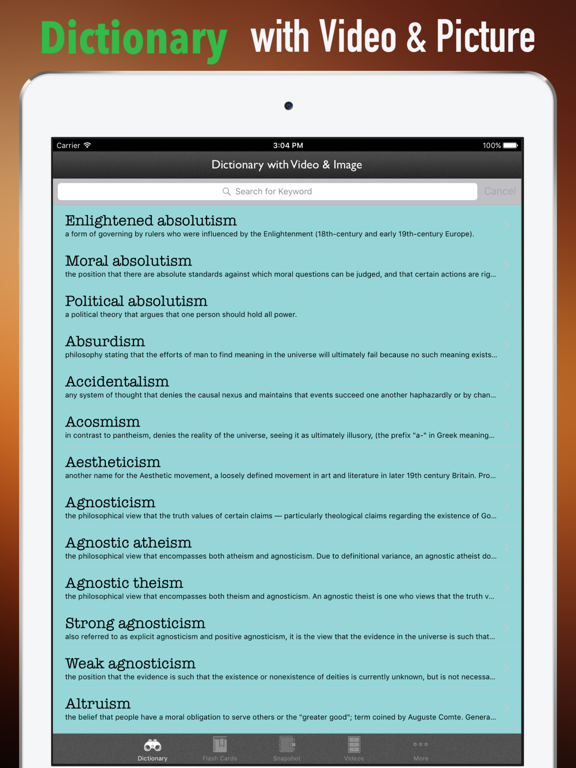 Also, I owe a debt of gratitude to Maureen Harrington for her help. I also say thanks to Mitchell Klute from Sounds True [2] for his skillful approach to business, and with it I thank Alice Feinstein and other employees of this publishing house for their creativity and professionalism. Finally, I am grateful to Tami Simone for her specific vision and continued support in bringing the ideas and practices I have outlined here to the general public.
Also, I owe a debt of gratitude to Maureen Harrington for her help. I also say thanks to Mitchell Klute from Sounds True [2] for his skillful approach to business, and with it I thank Alice Feinstein and other employees of this publishing house for their creativity and professionalism. Finally, I am grateful to Tami Simone for her specific vision and continued support in bringing the ideas and practices I have outlined here to the general public.
In the end, I say thank you to fate, fate, universal synchronism, and even blind chance or a happy coincidence - for the fact that my life path and my work turned out to be so unusual and non-trivial. And also for the fact that I was given the opportunity, or rather, the honor, throughout all these many, many years, to share such a deep and rich experience with a great many of my patients, students and colleagues. nine0005
Peter A. Levin, Ph.D.St. Ephraim the Syrian
Symphony based on the works of St.
Ephraim the Syrian
TruthSlander
Download
epub fb2 pdf Original: pdf2Mb
The Lord became the defender of the truth and came and was silent before Pilate, because the Truth was subjected to violence. Just as others gain victory through protection, so the Lord came out victorious through His silence, because the tribute that His Divine silence deserved was the victory of the true teaching. Offering the doctrine - spoke, on court - was silent. He was not silent about what he glorified us, and did not fight against those who offended. The words of His slanderers were bought as a crown on His head. He was silent, so that in His silence they would shout more strongly, and from all these cries, His crown would become more adorned. After all, if he had spoken, then by His truth he would have silenced the assembly that labored to make His crown. They condemned Him, for He spoke the truth, but He was not condemned, because condemnation became His victory.
So, nothing compelled Him to answer them by convincing them (of His righteousness). He Himself wanted to die, and the answers would have been an obstacle to His death. He was silent, for if he spoke, then the falsity (their) could not stand before His truth. nine0005
In the most extreme degree of passion perfect and strict abstinence is best. And by the extreme degree of passion is meant not sin itself, but a sinful movement, an inclination towards sin and an effort and, as it were, a desire to commit a sin. So, when desire, apparently, completely takes over, then savingly strict and exact abstinence in everything. When passion rises, then let the divine hunger be intensified, but let it be commensurate with the forces of what is embraced by passion, because such a passion can be cured only by prolonged labor. With the intensification of sin, let the divine hunger increase, that is, fasting; however, let it be observed in it proportionality with the strength of the sinner, because the strongest sins require more long-term labors for healing.
nine0005
If you, a sinner, sin in one day up to seventy times seven (Matt. 18, 22), God does not close the doors of bounty for you, unless you repent. If, going to bed at night, and you gave sin a place with you on the bed, then in the morning go with repentance to the house of the Physician, and He will heal you. If during the day another painful festering scab has come to you, then in the evening proceed to the threshold of the Physician, and He will heal your festering ulcers.
To the perfect, my word, brethren, will seem inappropriate and excessively indulgent, but my conversation pleases the poor sinner and fills him with hope...
The Lord is generous and gives to everyone who asks. You have an evil eye, but the eye of the Lord is not evil. Is He not full sovereign over His riches and over His treasures, to give them to every one who has nothing and to satisfy his needs.
If He does not refuse a gift to anyone who asks, then ask you, sinner. He, as the Most Merciful, will give to you.
No matter how often you ask Him, He always gives without refusal. Bring repentance from the heart and drop a few tears on the sin that stings you, and the pernicious ulcer will be completely healed on your members. Shed, sinner, currents of tears over the sin that overwhelms you, and, weeping like a dead man, commit him to burial, and sin flees from you. nine0005
If you don't pray, sinner, and don't long for your healing, then the Physician won't even begin to forcibly heal your ulcers and restore your health. If one custom draws you to the Physician, you will not get health. Your disease is healed only by tears and contrition. Turn your eyes and look at the harlot: she began to cry bitterly about her painful condition, her many-purulent sinful scab swelled and began to torment her, and for her lamentation, for the tears of her eyes, she again received health. She brought some tears as a gift to the Physician, who healed her infirmity - and He gave her health by the forgiveness of her sins, by taking away her iniquities and iniquities.
Her weeping is the great gift that she brought to the good Physician. nine0005
She came to the Doctor and begged Him to heal all her scabs. And she, who was ill with sins and filth, highly exalted and praised her for the sake of the tears that flowed from her eyes, forgave her and forgave her all her debts. Since the tears that flowed from her eyes proved contrition and love, the Merciful, as he noticed them, compassionately looked at the sins.
As long as the body is healthy, it is pleasant to see it, but as soon as the disease attacks it, the eyes will be indignant with the disease. The Most Merciful requires love from those who want to come to Him. And if he brings love and tears, he accepts the gift. nine0005
If the Merciful heals someone, he does not demand from him any other recompense, except for lamentation, tears and exceptional love. From the one who asks for the remission of sins, He requires only volition, because volition replaces burnt offerings and sacrifices.



